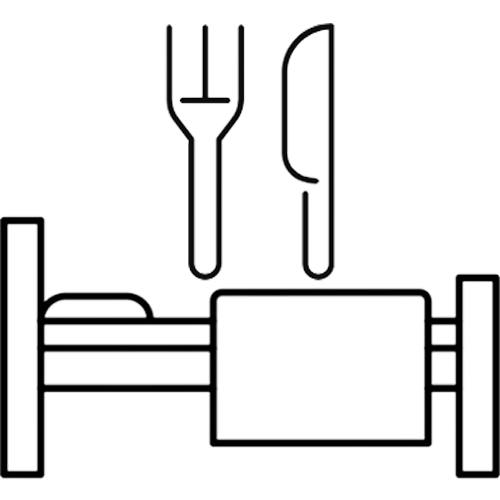Kintai is a settlement on the Curonian Lagoon. Kintai is surrounded by a beautiful pine forest (600 hectares) – Kintai Forest. In the centre of the town there is an Evangelical Lutheran Church dating back to the 18th century. Recently, the large Kintai church has gradually become a cultural centre, hosting the Kintai Summer Festival concerts. The Kintai Festival has become a recognised cultural phenomenon at European level. Kintai is also famous for the fishing inspector Vilhelmas Berbomas, an English merchant who lived here and, in 1844, introduced the marking of Curonian Lagoon fishermen’s boats with weathervanes. Such ornate and distinctive weathervanes were found nowhere else in Europe. In 1888-1892, the famous Lithuanian writer and philosopher Vydūnas lived and worked in Kintai. The Vydūnas Memorial Museum is located here, where you can deepen your knowledge about the past of Lithuania Minor and see a unique exhibit – Vydūnas’ harp. Kintai is also famous for the largest tuja tree in Lithuania, which is about 18 metres high and has a crown width of about 12 metres. Only Switzerland has a larger one.
Kintai is also famous for its fishing traditions. Fishing was the main business in those days, and this has remained the case to this day. Since ancient times, Kintis have been competing with fishermen from Rusnė for their special recipes for smoked fish. The Kintai-Ventė coast has become a favourite summer plein-air venue for artists.
The village of Minija, better known as Mingė, is situated near Kintai, in the lower reaches of the Minija River, and was first mentioned in written sources in 1540. Located in the picturesque Nemunas Delta Regional Park, the village is also unique in that the river, which attracts fishermen, forms a street, but you can’t cross it that easily – there is no bridge. Locals cross the river by boat or by pedalo. For this reason, and because of the beautiful scenery, the locals call Mingė the little Venice of Lithuania. The village has an excellent marina with a complete infrastructure. It is one of the most visited places in the region.
If you have been to the Pamary region at least once, you know how magical the natural beauty is. The wonderful nature of the Pomerania, the bird colonies, the forests, the river and the beautiful sunrises – this is the best rest from the noise and bustle of the city.
Kintai
Paskutinį kartą redaguota: 2023-12-19







































